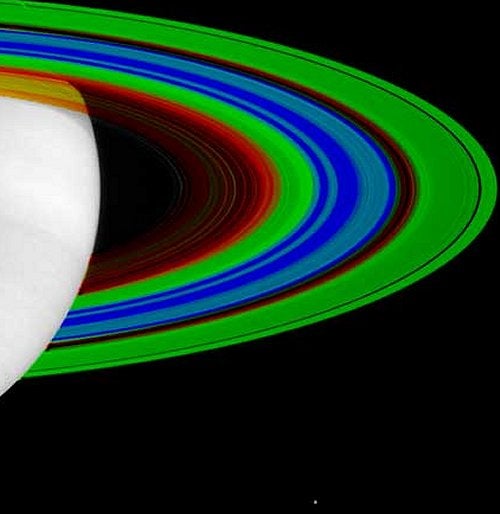September 3, 2004
Shortly after the Cassini spacecraft entered Saturn orbit, it captured this close-up look at ring temperatures. The composite infrared spectrometer, one of 12 onboard instruments, gathered the data shown in this false-color image. Red areas are relatively warm at -261° Fahrenheit (-163° Celsius), green represents -298° F (-183° C), and blue -333° F (-203° C).
Shortly after the Cassini spacecraft entered Saturn orbit, it captured this close-up look at ring temperatures. The composite infrared spectrometer, one of 12 onboard instruments, gathered the data shown in this false-color image. Red areas are relatively warm at -261° Fahrenheit (-163° Celsius), green represents -298° F (-183° C), and blue -333° F (-203° C).
As scientists predicted, because less light shines through opaque regions like the outermost A ring, these areas are cooler than more transparent areas like the inner C ring. This image also shows, for the first time, the individual ringlets and the Cassini Division are cooler than surrounding areas.
During Cassini’s 4-year tour through the saturnian system, this spectrometer will measure infrared emissions from the rings as well as from the surface and atmosphere of Saturn and its largest moon, Titan.










